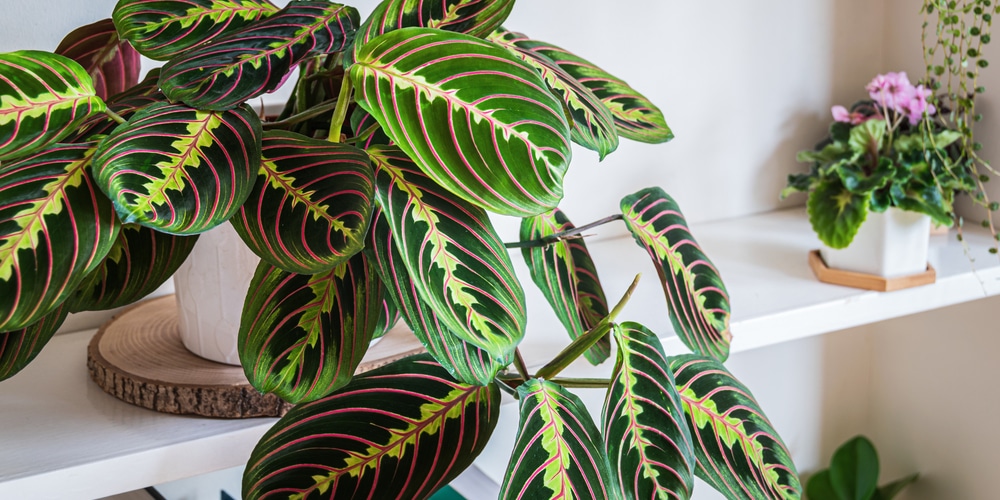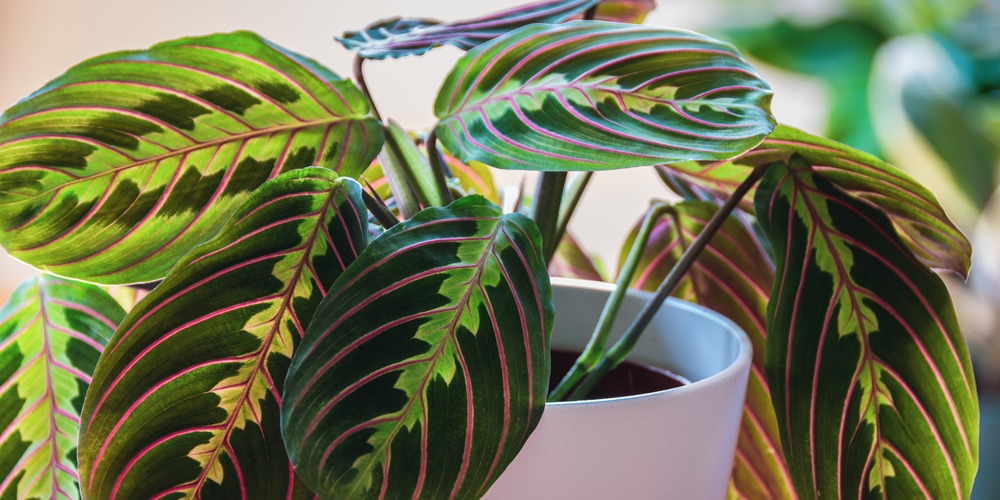Prayer plants aren’t as unique as you would hope when you encounter one; however, they have one peculiar behavior. They close their leaves at night and raise them in prayer, hence their name, prayer plant. While there are plants with tiny leaflets that twitch and wave, there are those that gulp down insects and animals, as you’d expect from a horror movie.
The prayer mantra is quite different. It isn’t sensitive to touch and doesn’t trap insects. The prayer plant straight up closes its leaves whenever it’s in the dark. These plants make excellent house plants because of their fairly doable demands. They are quite bright in direct sunlight; however, they bleach out when they aren’t exposed to sunlight.
The plant’s leaves move constantly during the day; however, when there is no sunlight, their leaves curl up and move to a vertical position. They do this because a special liquid flows to specialized cells located at each leaf’s base. However, no one is exactly sure why they do this.
Prayer Plant at Night: How do they move?
These plants exhibit nyctinastic patterns depending on the amount of sunlight. There is an assumption that their behavior is an evolutionary response or a developed habit; however, scientists can’t seem to reach a consensus. The number of species that exhibit this behavior is only a fraction of the entire plant population.
The main hypothesized reason is that the plant folds up its leaves for protection against loss of moisture during the night. The other reason could be that the plant protects itself from fungus attacks at night when there’s dew on its leaves. Other reasons include temperature regulation and protection from animals; however, you have to note that this is only speculation.
When do the plants move?
The plants move following a circadian rhythm (much like what’s observed in humans). The rhythm doesn’t relate to the time of day rather the presence of sunlight. For instance, you could move the plant to a dark spot in mid-day, and it’ll close up its leaves as if it was midnight. Note that their action of folding up the leaves takes a longer period than flattening them out.
Their folding-up action often happens gradually, and the only way you could notice it is if you take photos periodically from the same angle and compare them. While some individuals have admitted to hearing rustles where the leaves have moved quite fast in a short period, what happens is that one leaf is often on top of the other, restricting their motion whereby they move instantaneously when exposed to environmental forces, i.e., gravity.
Caring for a prayer plant
Prayer plants require well-draining soils, bright & direct sunlight, 65 to 75˚F temperatures, high humidity, and a moist potting mix. You’ll need to add some fertilizer every two weeks during the growing season and prune it three times annually or as desired. However, you’ll need to observe your plant and determine the best frequency regarding the amount of pruning and fertilizer.
Getting the factors right could help your prayer plant grow healthy. Most prayer plants have a 30-year lifespan; however, you’ll have to ensure that you provide the plant with proper attention. This shouldn’t be a problem if you are observant, dedicated, and have proper knowledge and experience.
Why should you grow a prayer plant?
Prayer plants are relatively low maintenance. They are also beautiful houseplants that can be grown in large containers or hanging baskets. They have a low and wide spread that serves a great ornamental purpose for your home. Plus, they clean the air in your home as they grow. They also have attractive foliage and are hardy for indoor spaces.
What should you do if your prayer plant isn’t moving?
Most people get concerned if their prayer plant isn’t moving. However, they have to note that this doesn’t necessarily mean that the plant is unhealthy. If this happens, then the first thing to do is check their exposure to light (ensure that the plant is exposed to sunlight), and water them thoroughly to help them produce the fluid needed to raise the leaves.
Prayer Plant at Night: Conclusion
Prayer plants are great ornamental plants that you could add to your home. They also offer a unique glimpse into botanical mysteries that scientists haven’t quite figured out. The plants demand more attention than other plants; however, it’s an investment that pays.
Planting prayer plants can be a great addition to your home if done right. Have fun!
Related Article: How to Revive a Prayer Plant

